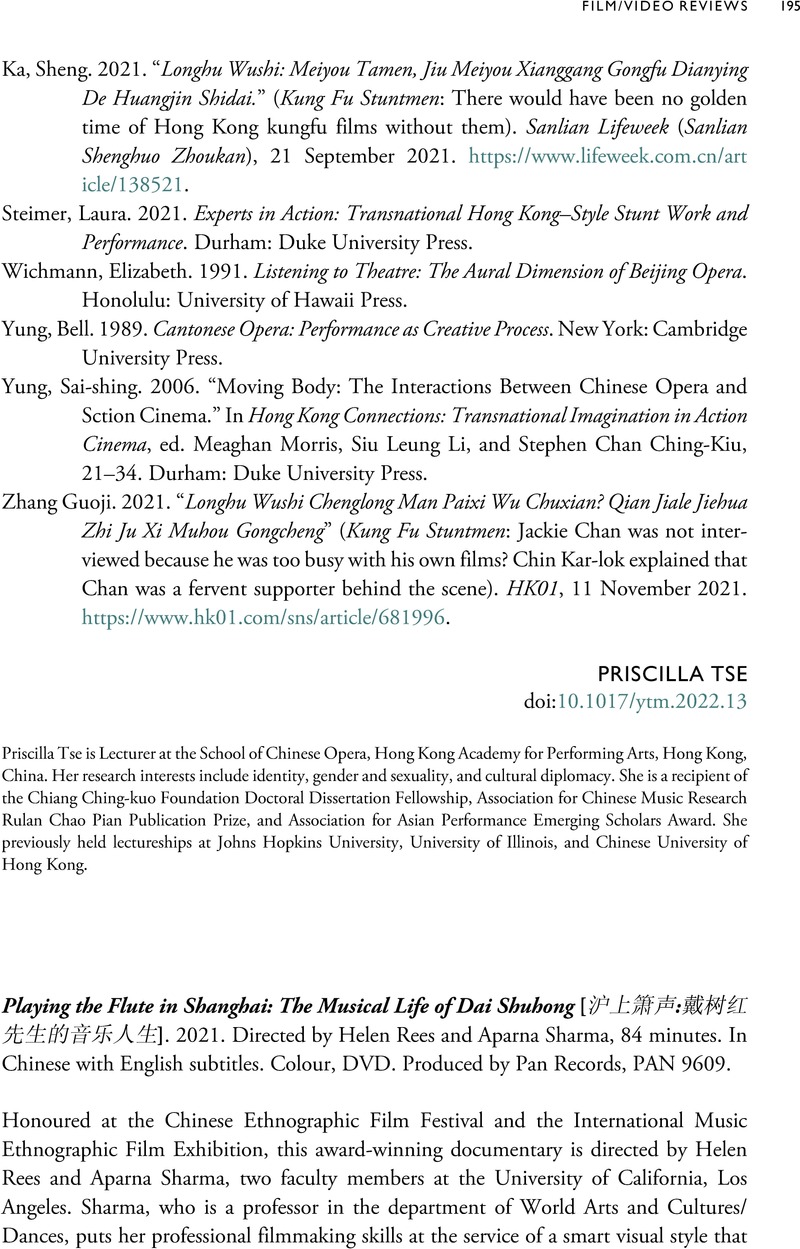No CrossRef data available.
Article contents
Playing the Flute in Shanghai: The Musical Life of Dai Shuhong [沪上箫声:戴树红先生的音乐人生]. 2021. Directed by Helen Rees and Aparna Sharma, 84 minutes. In Chinese with English subtitles. Colour, DVD. Produced by Pan Records, PAN 9609.
Review products
Playing the Flute in Shanghai: The Musical Life of Dai Shuhong [沪上箫声:戴树红先生的音乐人生] . 2021. Directed by Helen Rees and Aparna Sharma, 84 minutes. In Chinese with English subtitles. Colour, DVD. Produced by Pan Records, PAN 9609.
Published online by Cambridge University Press: 08 February 2023
Abstract
An abstract is not available for this content so a preview has been provided. Please use the Get access link above for information on how to access this content.

- Type
- Film/Video Review
- Information
- Copyright
- © International Council for Traditional Music 2023


